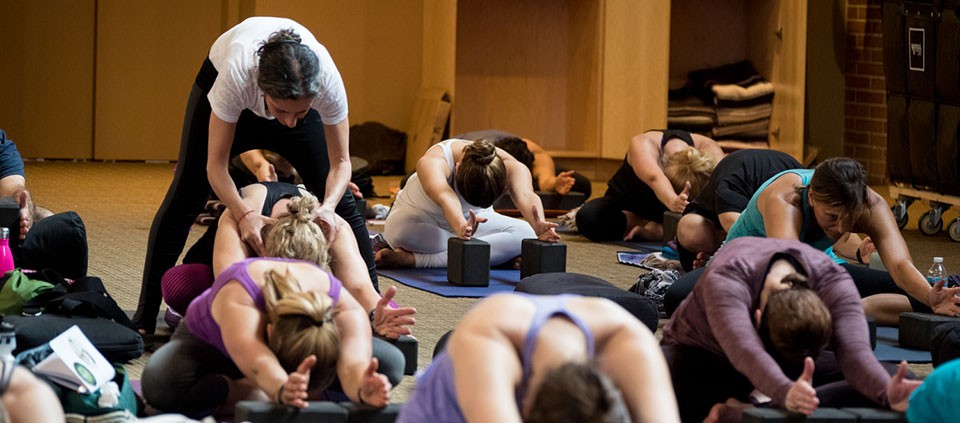Why Yoga Teachers Need an Understanding of Psychology

I have met numerous yoga teachers and dedicated practitioners who have a passionate interest in psychology but who do not want to undertake long-term studies in the subject. Some of them long to bring a more nuanced psychological understanding into their own practice and teaching. Others are aware of the unexamined psychological content that may arise in the yoga room, and do not know how to address and guide students through these processes.
Although yoga teachers are not licensed healthcare professionals, issues of mental and physical health often emerge in the context of teaching yoga. Scope of practice refers to the procedures, actions, and processes that a healthcare practitioner is permitted to undertake in keeping with the terms of their professional license. The postures and breath practices taught in yoga classes are powerful and often bring up strong emotional material, and it is not within the scope of practice of most yoga teachers to address these wounds. They are more effectively addressed in therapy and therapeutic groups led by professionals, or through pursuing more in-depth psychological and somatic training.
Those who teach yoga as a profession inevitably come across students who are profoundly wounded who want attention beyond the scope of the teacher’s practice. This most often occurs when teachers offer intensives, teacher trainings, esoteric practices, or set themselves up (or are projected by their students to be) in a position of spiritual authority, but it can happen at any time. Accordingly, it is of utmost importance that yoga teachers understand the limits of their psychological capacity, and also to have a list of resources that they can refer students to.
Furthermore, yoga teachers should understand the distinction between neurosis and psychosis—terms that are often used interchangeably without understanding the key distinction between them. Neurosis and psychosis exist on a spectrum in which the degree, duration, and resulting debilitation of symptoms distinguish the two. Neurosis refers to any mental or emotional imbalance that causes distress. We are all a little bit neurotic and experience imbalance at various times throughout our lives. The invisible line that occurs when our neurosis begins to impair our occupational, academic, or interpersonal functioning, either experienced by our own subjective experience or by those around us, is how psychosis or psychopathology—terms that can be used interchangeably—is determined.
The key manual that describes psychopathology in the disciplines of psychology and psychiatry is the Diagnostic and Statistical Manual of Mental Disorders (DSM-V), a thick volume that fortunately has a more accessible, condensed desktop version, Desk Reference to the Diagnostic Criteria from DSM-5. The DSM is updated every several years to reflect developments in the field. When I teach depth courses in Yoga & Psyche, I recommend that students familiarize themselves with this resource—not so that they can diagnose people or become amateur psychologists, but so that they have an understanding of some of the major forms of psychological challenges that are likely to arise in their yoga room, among the most common being anxiety and depressive disorders, a spectrum of eating disorders, and mood disorders.
When I was in graduate school, we were required to take a class on psychopathology in order to understand the distinctions between the various types of psychosis and mental disorders that can arise. I remember fondly (in retrospect, at the time it was dead serious!) how each week one of us would come to class convinced that we had a severe form of psychopathology. The teacher would empathically help us to understand that in the process of self-discovery and psychological inquiry, we might discover aspects of these conditions in ourselves, but that psychosis was determined by the severity and duration of symptoms, which were often far more severe than most of us experienced.
Another important reason for teachers to engage in psychotherapy or psychological inquiry is to prevent spiritual scandals. Almost all such scandals happen due to the psychological blind spots in spiritual teachers and their students. It is not that the spiritual practices that they teach and practice are flawed, but that an equal depth of psychological self-awareness does not accompany them.
The challenges that all people face—particularly those of us born into a world where trauma is not something that affects just a few individuals—are simply not going to be addressed by yoga alone. Again, the yoga of the East was not designed to address the psychological traumas of the West. When there is a crisis or scandal, no matter how many times we chant om, or how many yogic practices we engage, it is not going to heal our psychological and relational wounds. People need to heal, feel, talk, and work things through. They need to understand how they contributed to the dynamic, what they have learned, how to forgive themselves and others, and how to transform their pain. This is a place where psychology is so brilliant and irreplaceable in its capacity.
Excerpted from YOGA & PSYCHE: Integrating the Paths of Yoga and Psychology for Healing, Transformation, and Joy, by Mariana Caplan. Sounds True, February 2018. Reprinted with permission.
Find out about upcoming programs with Mariana Caplan at Kripalu.
Mariana Caplan, PhD, MFT, E-RYT 500, is a psychotherapist, yoga teacher, and the author of eight books.
Full Bio and Programs